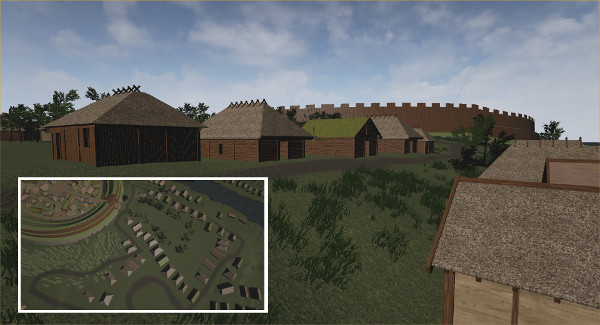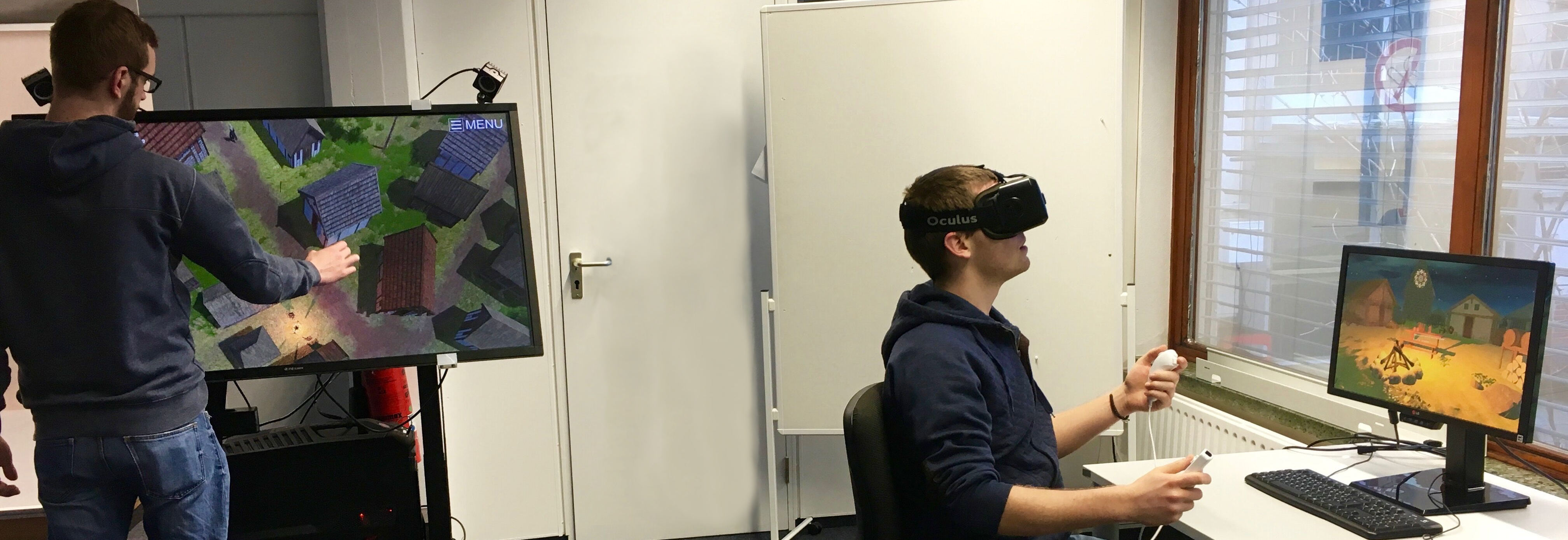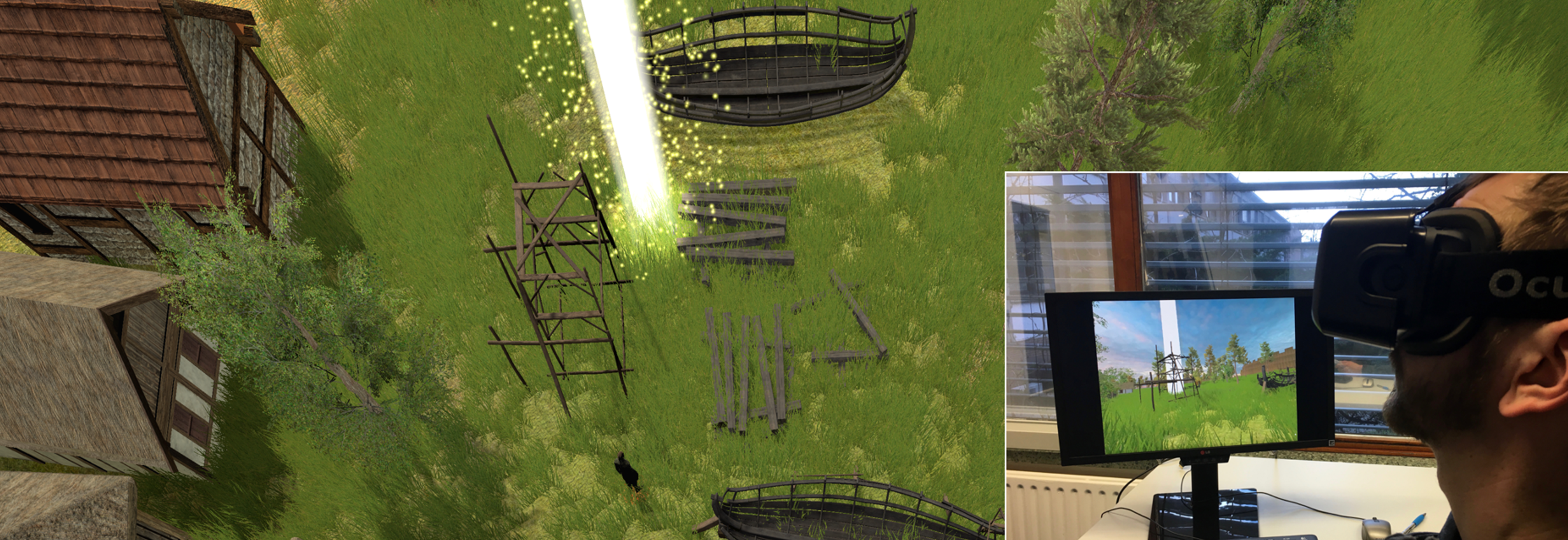Virtual Hammaburg
The Hammaburg is a medieval castle of the 9th century. As the origin of Hamburg it has a significant meaning for archaeology, tourism and city marketing.
In cooperation with the archaeological museum of Hamburg in Harburg we developed interactive scenarios for this environment, such as navigation and exploration on a multi-touch table or walking and flying around wearing a head-mounted display. Furthermore we have build a scenario for a stereoscopic projection wall.

We used the hammaburg 3d model for an experiment to evaluate the novel Leaning-Amplified-Speed Walking-in-Place (LAS-WIP) user interface. This is an omnidirectional locomotion system, which we designed to work in small laboratory environments and is based entirely on consumer hardware.
Contact
Interactive Exhibitions - Explore the Hammaburg
Supervision
Project Team
|
Goal
Aim of our project was to create an interactive and collaborative virtual exhibition. We wanted to explore the possibilities of a multiplayer application using different user interfaces and input devices in the same environment. To implement this goal our setting is designed for two different players. One is using a touch table (ispace) as the server and the other one is using an HMD (Oculus Rift) with a wireless controller (Wii Remote) as the client. The setting takes place in an improved model of the Hammaburg to serve as our virtual environment.
Motivation
While touch tables can be used by many people at once, head-mounted displays like the Oculus Rift are limited to only one user. We were curious to see how these different devices combined would effect collaborative exploration in virtual space. Our intention was to combine the advantages of both in one project. Based on a cooperation with the "Archäologisches Museum Hamburg Harburg", the preexisting Hammaburg model was an ideal setting for the purpose of our project. With a realistic scenario, we could extract use-cases and -stories for our work.

Setup
Approach
In order to make our project attractive for visitors, we enhanced the appearance of the existing model. For a satisfying result, we needed to revise nearly every object in the former model. We reshaped houses and exchanged textures, yet obtaining the archaeological ground plan. In addition, we added ground material to the terrain and placed moving objects like ships, animals and NPCs in the scene to provide a vivid and exciting virtual world. Simultaneously we had to discuss which tasks were suitable to promote interaction between the users. We then elaborated two game modes that we could implement within the given time frame. - One game mode for mere exploration without any tasks. Both users are placed in the Hammaburg scenery, which they can freely explore on their own. The touch table user can follow the other player's movements on the screen. The Oculus player can see a "God Beam" created by the touch table player. These light beams are meant to be used to guide the Oculus player through the scene. - In the other game mode both players have to work on a task, which can only be mastered through collaboration (among both). We wanted this "mini game" to be an authentic medieval task to make the users feel part of the Hammaburg rather than solely observing it. After doing research on everyday life tasks of people living in the Hammaburg, we chose the making of pottery as a suitable task where we could also make best use of our selected devices.

Setup
Conclusion and Outlook
Evaluation of a concluding study showed a general interest of all participants, but we also ascertained that the participants' curiosity to explore was not entirely met. Due to our limited time resources the Hammaburg still lacks of interactions for the respective interface. However, we believe this only reflects the high potential of our project. Future versions could be extended by other "mini games" to enrich the experience and to involve the player even more in the daily routine of medieval Hammaburg. Detailed historic information could be added to be presented in exploration mode. The concept of interactive collaboration in a museum environment is promising.
